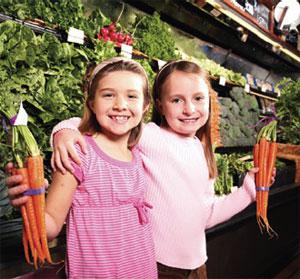Bringing Low-Income Shoppers into the Co-op

Once upon a time in Burlington, Vt., on the shores of Lake Champlain, the downtown grocery store went belly up. In dismay, city leaders asked for proposals for another store to come in and take its place. At the end of the application process, two stores made the final cut: Shaw’s, a conventional grocery store, and Onion River Co-op, a small, local natural foods co-op.
The conventional store, thinking it had the upper hand, tried to extort an outrageously expensive parking garage from the city. They were rebuffed. The co-op, amazingly, remained the last one standing.
Aghast at the prospect of a natural foods store serving the needs of the poor and the elderly, half of the citizenry cried foul. They wrote letters to the editor and complained, “There’s no way a co-op can meet the needs of all the people in town. Tofu and organic vegetables aren’t my cup of tea. And that co-op is way too expensive!”
The city quickly tried to douse the fire. It stipulated in the lease that the new downtown store would meet the needs of all the citizens of Burlington by carrying a line of conventional products and also by redeeming food stamps.
The co-op, doing business as City Market, lived up to the new provision and became a crossover store. A conventional distributor, Associated Grocers, was contracted to mix in 25 percent conventional products. General Mills’ Cheerios were placed alongside Barbara’s organic Honey Nut O’s. Conventional bananas were in plain sight of organic, fair trade ones.
The city keeps a watchful eye on how the co-op is doing. Each year the co-op’s general manager reports before the City Council on compliance of the store’s product mix. And to show how the co-op is meeting the needs of low-income residents, the co-op presents graphs on trends in food stamp purchases.
Poverty—and a look in the mirror
Then, something out of the ordinary happened. A disturbing report was released, showing that one in every five children in Burlington was living in poverty. Ironically, at the same time Burlington won an award for being the healthiest city in the country!
This report made the management of the co-op take a good hard look in the mirror at our outreach efforts. We asked ourselves whether we are really achieving our Ends policies, which include: “Residents enjoy an enhanced quality of life.”
For several years, our outreach department had fielded hundreds of donation requests each month, ranging from the Girl Scouts to Little League teams to religious organizations. The co-op desperately needed some clear guidelines. All agreed that the appalling number of children living in poverty in the nation’s healthiest city was the appropriate focal point. But how would this translate into results?
Through a brainstorming effort, the co-op realized it couldn’t go into children’s houses and feed them. The next best course of action was to make good nutritious food more accessible to low-income parents. How to measure this? We decided to try giving a 10 percent discount to any food stamp recipient using the EBT card to make a purchase. We proposed this program to the national food stamp authority. We were assisted by our congressional delegation, which wrote glowing letters of support on our behalf. The proposal went absolutely nowhere. The food stamp authority wanted nothing to do with us.
Finding another way
Undaunted, we discovered that our wonderful sister co-op, Hunger Mountain in Montpelier, Vt., was working on a similar program. Hunger Mountain bypassed the food stamp authority by using multiple methods of verifying need. We decided to mimic that co-op’s strategy by adding WIC (Women, Infants and Children) enrollment and/or proof of disability to food stamp eligibility as a prerequisite to receiving a discount.
One stumbling block remained: the privacy of the transaction. We needed a way to offer the discount without customers announcing their status at the register. The solution was to have participants join the co-op. The discount would be linked to the membership card for one year. Since our bylaws say that equity payments may be suspended for reasons of financial hardship, we offered a one-year waiver of payments.
We rolled out this new program in late May of 2008 and called it “Food-for-All.” The results have been simply phenomenal. Over 800 individuals and families have joined the Food-for-All program. They are almost exclusively new members to the co-op, with very little overlap with the co-op’s existing membership.
The co-op has delivered more than $80,000 in savings on over $800,000 in sales. These are new sales from an untapped segment of Burlington. These new members had never shopped here before.
We didn’t do this to get the attention of the press. But we’ve received public praise for the program from agencies that serve needy children and from co-op members, too. In a time of recession, when our neighbors are struggling and there’s a feeling of national discouragement, co-op members are extremely proud to be activists delivering relief to the children most at risk in our community.







